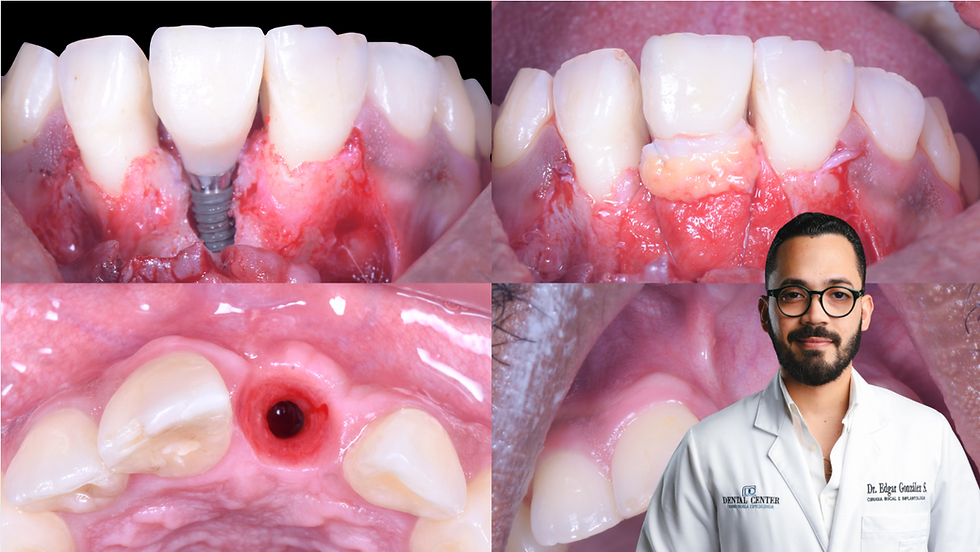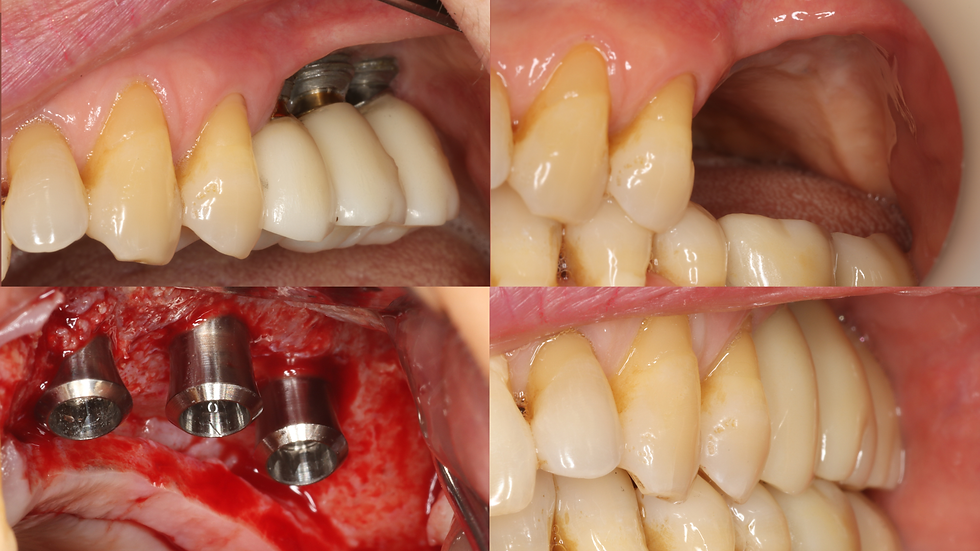8 Years Follow-up Case of Class III CMI/CM Fixation in the Maxillary 1st and 2nd Molar Area
- Dr. Jongyub Kim

- Nov 21, 2016
- 3 min read
Updated: Sep 7, 2021
Situation
Patient Information
Patient: A 62-year-old woman
medical history: primary hypertension, a psychiatric problem, and mild gastritis.
No history of alcohol consumption or smoking.
Treatment Planning
The residual alveolar bone height at #26 and 27 sites was measured as 6-8mm from the panoramic view. In this case, there were three choices to make: Class I CMI fixation with 6-7mm short implants without involving the inferior cortical wall of the sinus; Class II CMI fixation with 7-8.5mm long implants without bone graft; Class III CMI/CM fixation with 8.5-10mm long implants with crestal bone graft. In this case, Class III fixation was chosen after long discussion with the patient. She wanted to have longer implants. So we decided to place two 5x10mm implants with 3-5mm sinus elevation with the SCA technique.

Panoramic view at the first visit showed cantilever bridges on #23-25-X area & #34-35-X. Implant placement was planned at #26,27, and #35, 36 & 37 area.

A labial view of the left posterior area showed enough attached gingiva and a broad ridge at the #26 & 27 area.

A radiograph showing 7-8mm and 6-7mm residual bone heights at the #26 and #27 sites respectively. This case was classified as Class III CM fixation, where implant placement was performed simultaneously with sinus graft. Prior to the placement of a 10mm long implant, the SCA kit was used to aid sinus grafting procedure.

A crestal incision was made for flap reflection, and a 2mm twist drill with a stopper 1mm shorter than the residual bone was used to drill up to 1mm short of the sinus floor.

Lateral osteotomes were used to compact soft bone laterally. The bone density was D442.

The Ф3.2mm diameter S-reamer was used to penetrate the sinus floor.

As the depth gauge goes down into the osteotomy opening, it must remain in contact with the lateral wall of the osteotomy site all the time. The operator should feel the hard resistance at the bottom if the cortical bone of the sinus floor is not completely drilled through. The same procedure is repeated until the operator notices a drop with the depth gauge.

The space created between the sinus floor and the lifted membrane was filled with 0.5cc of FDBA (RegenOss, Cellumed, Korea). A bone spreader with 10mm stopper was used to detach the membrane by spreading the bone laterally in the space created by lifting the sinus membrane. It reduces the tension on the membrane so that more bone could be inserted without the membrane tearing.

Two implants (EB 5.0X10mm, Neobiotech, Korea) were inserted. The insertion torques obtained for #26 and 27 were 40 and 25 Ncm respectively. Class III CMI/CM fixation played a major role for high insertion torques.

Healing abutments were connected, and simple interrupted suture was used for primary wound closure.

Postsurgical panoramic radiograph. Adequately positioned implants and 3-5mm high dome-shaped grafted bone around the implant apices are seen.

Three months post-op: Adequate amount of attached gingiva is present around the healing abutment. An impression was made at that time.

SCRP type prosthesis. Occlusal adjustment and polishing were done after the access hole was filled with composite resin.

A buccal view of a definitive 2 unit PFM prosthesis (SCRP) in maximum intercuspation.

Panoramic view after the delivery of the definitive prosthesis. Graft material around the implants was well maintained.

Panoramic view (8 year follow-up). Pneumatization of the new inferior border of the sinus is clearly visible at this time. Marginal bone resorption was observed at the distal area of #27 implant.



Comments